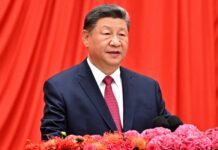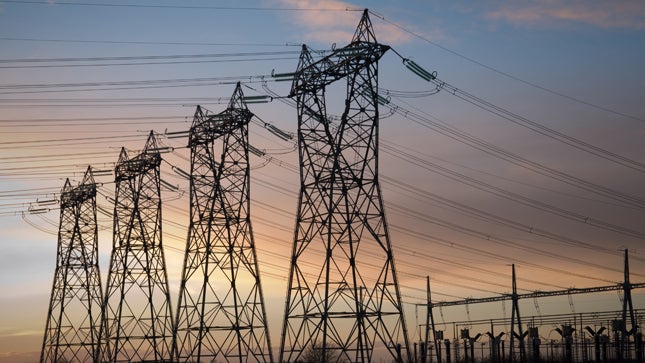“People and their managers are working so hard to be sure things are done right that they hardly have time to decide if they are doing the right things.” Stephen Covey’s above statement aptly fits the back-and-forth shuttling that is currently going among the NTDC, NEPRA, and the government on the draft Indicative Generation Capacity Expansion Plan (IGCEP). In the midst of heated arguments as to whose projects should be included in the Plan, our decision-makers have completely missed the fact that the very foundation, “least-cost centralized planning”, on which this Plan is based, has been rendered obsolete.
The days of strategic planning in the power sector are long over. As the sector undergoes an unprecedented transformation,unleashed by technology-driven disruptive forces during the past decade, almost all aspects of this century-and-a-half old and most stable of businesses have come under criticism —the physical infrastructure, institutional setup, business model, regulatory framework, pricing approaches, performance control, you name it. A new approach seems to be sinking in the boardrooms of power utilities that, in contrast to this industry’s history, their focus must now shift to the extreme end of its value chain, the consumers, if they want their businesses to remain profitable
Infrastructure industries, thought to be the exclusive domain of the state for their natural monopoly and public-service character, couldn’t remain immune to the market forces that were unleashed in the 1980s. First to fall was public transport, then the airline industry, and later the telephone industry. Power utilities, considered the last bastion of such industries, resisted any major change, except for a guided competition here and some choice there. But, with the advent of smaller generators with cost and performance features beating those of their large-sized competitors, these utilities also couldn’t survive the market’s onslaught. The final death blow to this behemoth, however,was dealtby the advent of small, modular, and competitive renewable power generation technologies.
The industry is arguably at a crossroads. Some other developments, including the growing popularity of electric vehicles (EVs), EVs-driven demand for compact and affordable battery storage, and smart grid technologies, have shaken up the very foundation of this industry. The question isn’t whether to change or not, as there are no two opinions among utility executives about it. The real issue is how to manage the change and to what extent, as some of them, due to comfort of old routines, are still reluctant to make any radical change even though the world around their industry has gone topsy-turvy.
But change they must because it’s unavoidable, and the sooner they do, the better it would be. Planning and planners hold a pivotal role in easing out the requisite transformation. From its traditional role of providing business solutions to executive management that are robust against a set of predictable future scenarios, planners are now being called upon to aid top leaderships in thinking strategically and devising strategies to redefine and realign their position in a market that continues to be ruled by unpredictable surprises. In this new world, agility and flexibility for adapting to changing markets are the new rules of the game.
As the old saying goes: “There is no right way to do the wrong thing.” Our leaders must make the suggested transformation because it is inevitable and the nation cannot afford to delay it any longer. The suggested changes will be difficult as well as time- and resource-consuming, but their payoffs to the nation would be huge in terms of avoiding unnecessary, capital-intensive, and largely import-dependent generation and T&D assets
The traditional approaches to power sector planning, including “least-cost planning”, “integrated resource planning”, “portfolio planning”, and more recently, “value-based planning” are all remnants from an era when electric utilities were considered among the most stable and least risky of industries for investment since economies of scale existed in generation and transmission, competition was non-existent, consumers had no choice in suppliers, and a handsome return on investment was guaranteed by regulators.
Traditional planning in its various forms essentially consisted of aggregating consumers’ forecast demand within the utility’s control area and meeting it through a least-cost sequence of generation and transmission and distribution (T&D) capacity additions. These approaches have lost their rationale. A business-as-usual approach essentially is tantamount to locking the country into capital-intensive, long-lived, import-dependent, and environmentally-hostile infrastructure which, if in place, will be difficult to change, let alone rollback.
In the above backdrop, issuing IGCEP-type plans by our government is, therefore, baffling, to put it mildly. It clearly shows that our government and power sector entities are still stuck with the traditional approach to managing this sector via large central-station generation facilities. In this writer’s view, a major part of the future investment should instead go to augmenting and strengthening the T&D systems and building institutional capabilities instead of expanding central-station generation and allied transmission systems.
The government and NEPRA will have to seriously revisit their present approach to power sector planning and development. The central focus of the government in the next five to ten years should be the distribution systems because it will be the front where most of the action will take place. Enabling regulations, visionary leadership,dynamic and savvy management, intelligent and smart networks, and imaginative, creative, and innovative service packages will all be required to offer electricity to customers (yes, you are reading it right, no more captive and helpless “consumers”) to win them back and keep them tied with the grid. System planners have a special role in the future, as further discussed below.
Planning will need to start at the consumer’s end, by identifying his energy service needs, like space conditioning, lighting, cooking, food preservation, mobility, etc. After identifying these at the individual as well as community levels, planners should consider the scope of electricity in serving these requirements, at source, through a nearby distributed plant, or from the utility’s main grid whichever proves to be the most feasible solution.
Reaping the huge potential that shifting the planning and development focus at the distribution level, however, will not be easy. It will require strong political will and commitment by the government and some systemic overhaul in the existing institutional structure. Most planning tools, institutional capacity, and financing arrangements have evolved around large and central-station supply-oriented schemes based on conventional technologies. As such, these deeply-entrenched practices will be difficult to unravel and replace with a new thinking and approach.
A major part of the system planning function will also need to move from its current central location— under the NTDC— to DISCOs as these entities are much closer to customers, and thus can better plan for the demand and required supplies within their jurisdictions. In a sense, DISCOs will be planning for mini-grids that will be designed to function as autonomous systems largely, but will be tied with the NTDC’s national grid to mutually assist each other to enhance operation of the national grid.
The existing planning capacity within DISCOs will require considerable strengthening and re-equipping to enable them to perform their new and enhanced roles. The planning function at NTDC will still be required but its aim and role will have to change. Instead of being the sole planner for the power sector, it will need to act as a coordinator and facilitator in linking together mini-grids under DISCOs.
As the old saying goes: “There is no right way to do the wrong thing.” Our leaders must make the suggested transformation because it is inevitable and the nation cannot afford to delay it any longer. The suggested changes will be difficult as well as time- and resource-consuming, but their payoffs to the nation would be huge in terms of avoiding unnecessary, capital-intensive, and largely import-dependent generation and T&D assets.























